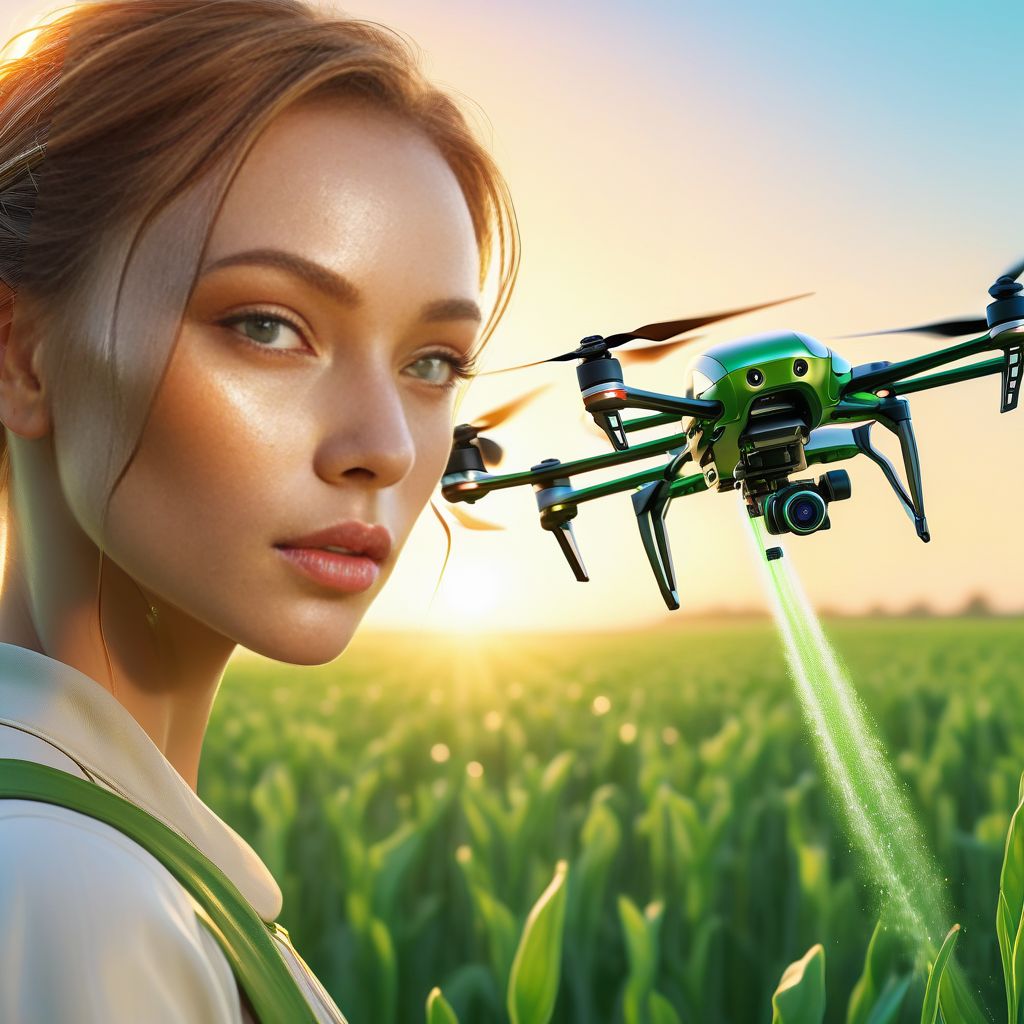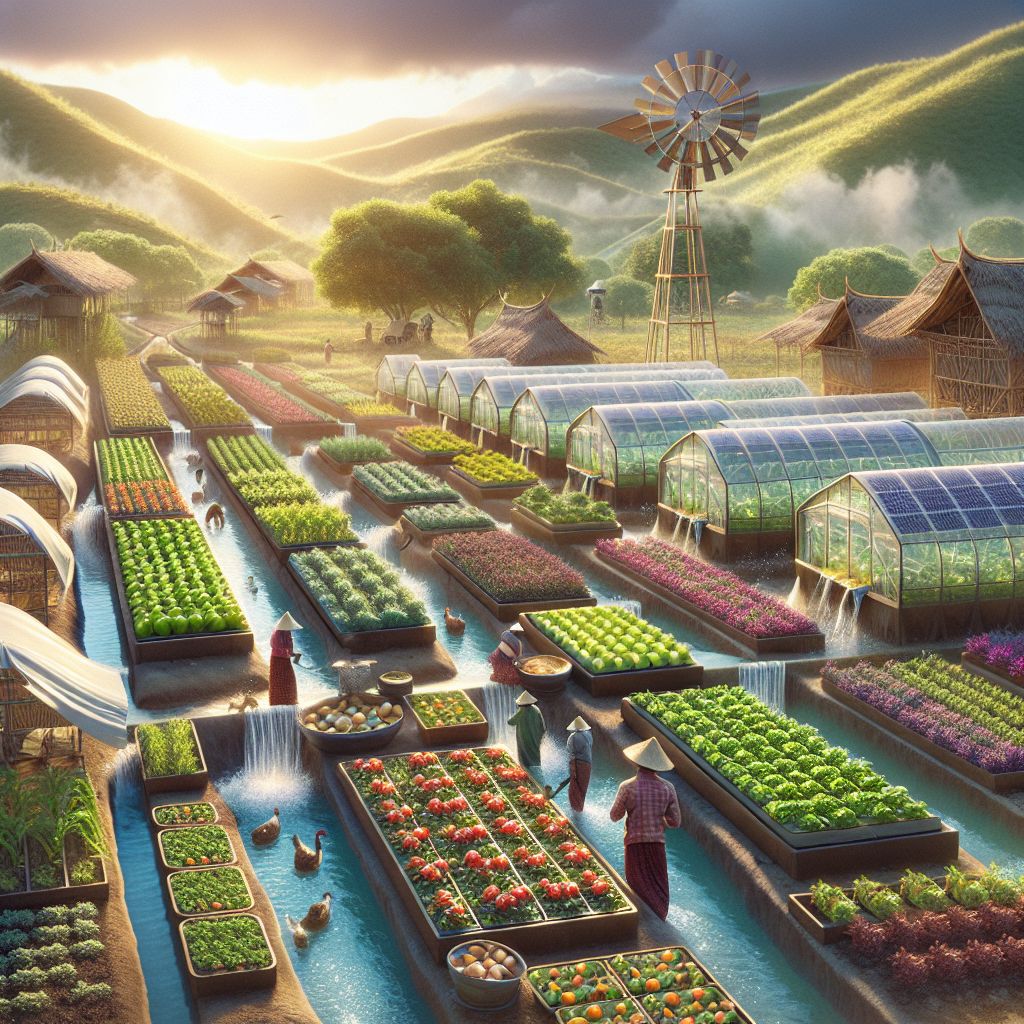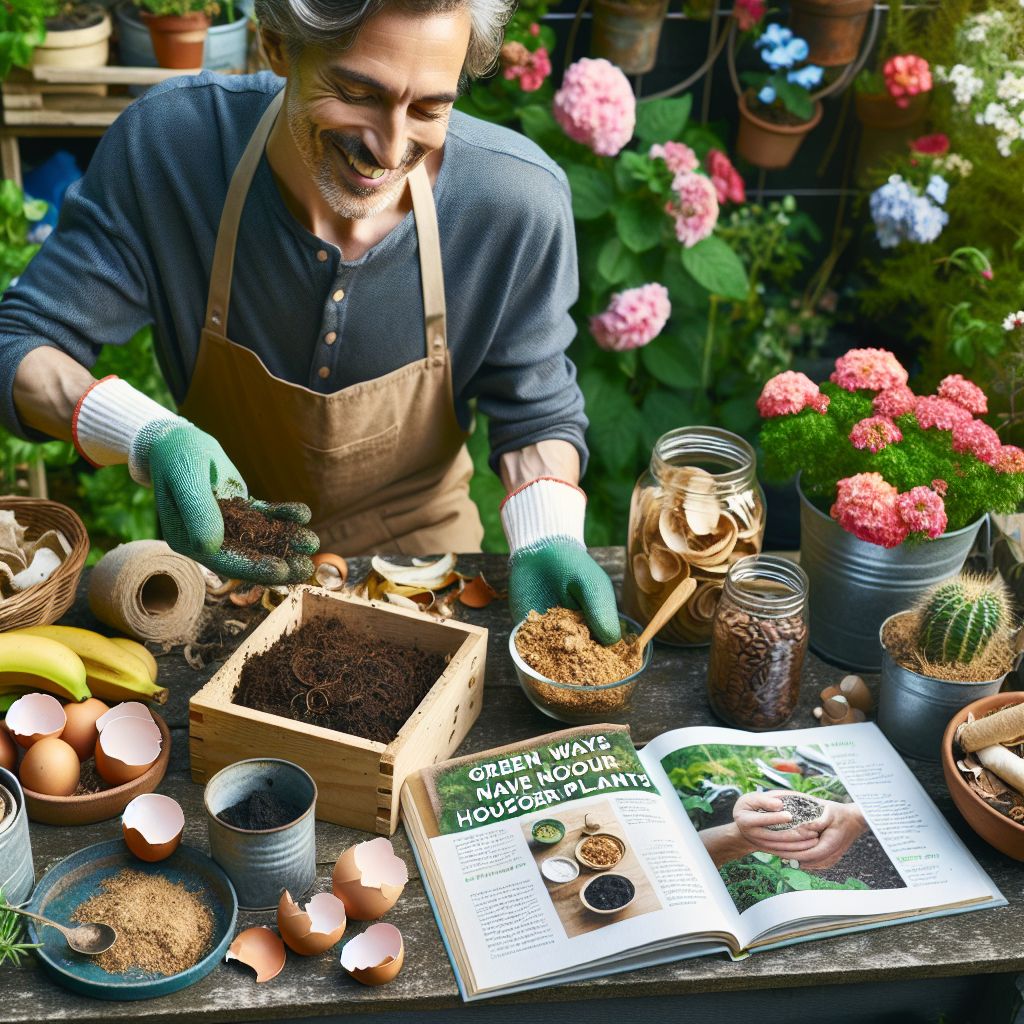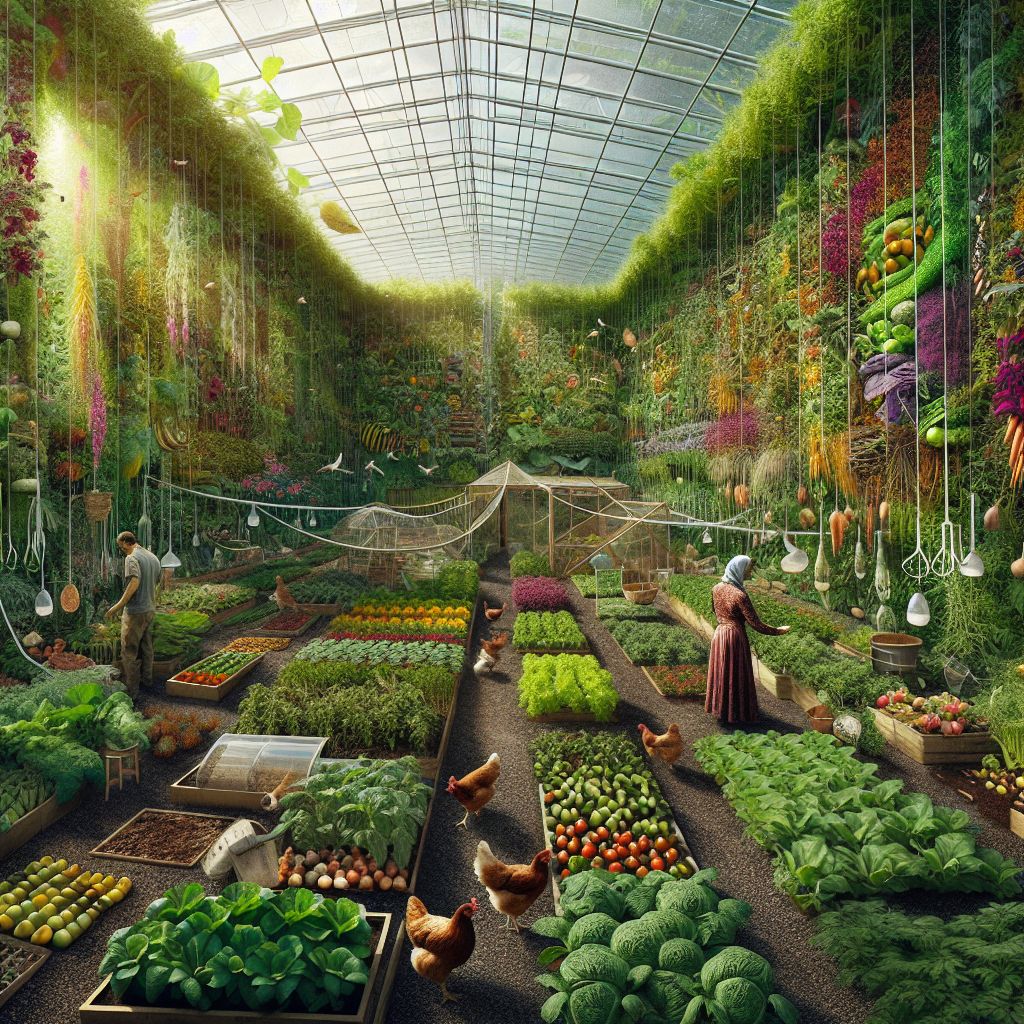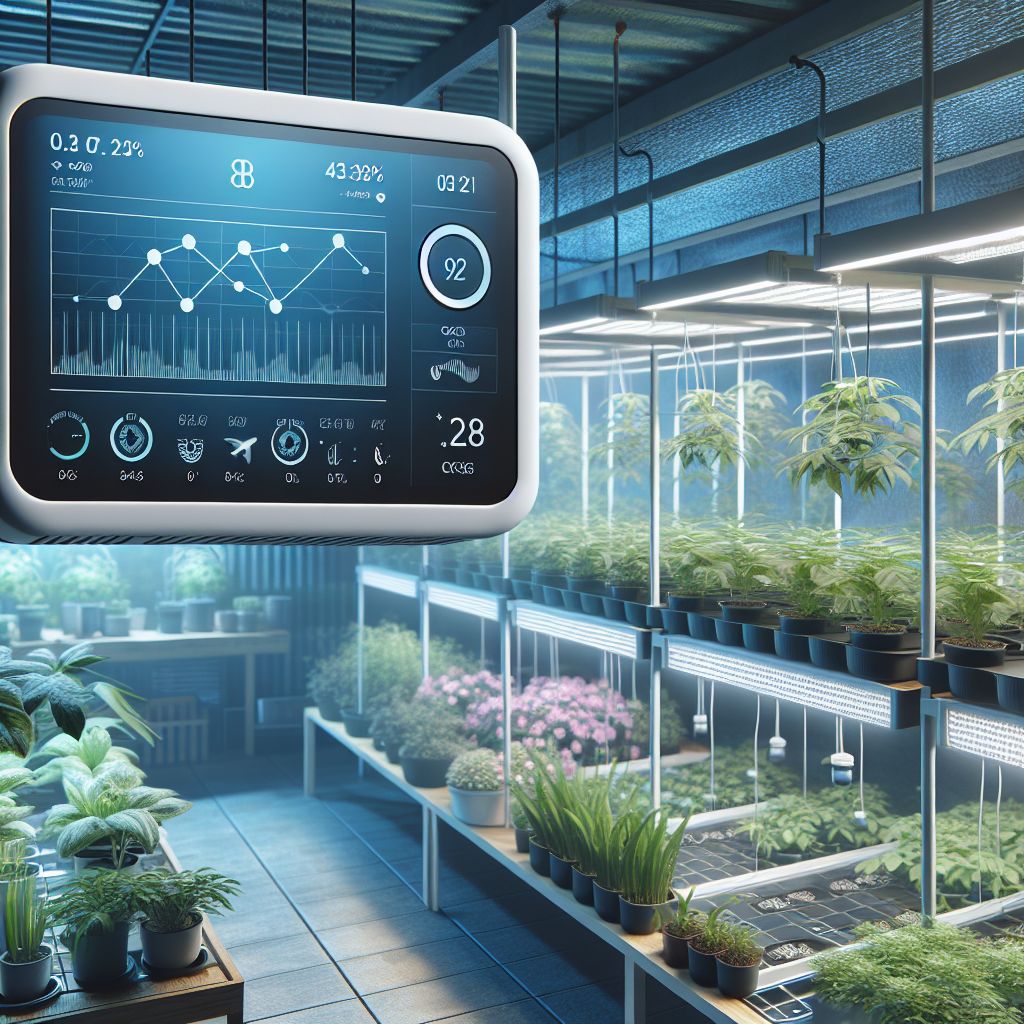Key Takeaways
- IoT Smart Greenhouse Automation uses sensors and devices to monitor and control environmental conditions, optimizing plant growth.
- Automation reduces labor costs, minimizes human error, and allows for remote management of greenhouse operations.
- By conserving resources like water and energy, smart greenhouses contribute to more sustainable farming practices.
- Implementing IoT systems can lead to increased yields and better quality crops due to precise control over growing conditions.
- Addressed Common challenges like connectivity issues and data security with careful planning and the right technology.
The Core of Greenhouse Automation: Understanding IoT Systems
At the heart of any smart greenhouse is the IoT system. This is the technology that monitors, analyzes, and responds to the various data points within the greenhouse environment. But what does this system actually consist of? Let’s delve deeper.
The Role of Sensors in a Smart Greenhouse
Sensors are the eyes and ears of a smart greenhouse. They are the devices that collect data on everything from temperature to soil moisture levels. Here are some of the most common sensors you’ll find in a smart greenhouse:
- Temperature sensors: These keep track of both the air and soil temperature, which is crucial for plant development.
- Humidity sensors: They measure the amount of moisture in the air, which can affect plant growth and disease prevalence.
- Soil moisture sensors: These determine how much water is in the soil, ensuring plants get the right amount of water without waste.
- Light sensors: They monitor the intensity and duration of light that plants receive, which is vital for photosynthesis.
But sensors alone don’t make a greenhouse smart. It’s what happens to the data they collect that really matters.
The Central Control Unit: The Brain of Your Greenhouse
Think of it as the brain of your smart greenhouse. This unit analyzes the data and then sends commands to actuators, which are the mechanisms that adjust the environment—things like opening a vent, turning on a heater, or starting a watering system.
The beauty of this system is that it can make adjustments in real-time, responding to the immediate needs of your plants. For instance, if the temperature sensors detect that it’s getting too hot, the control unit can trigger the opening of vents to cool the greenhouse down.
Connectivity Options for Real-Time Data Access
Your sensors, control unit, and actuators need to be all connected. This is where the ‘Internet’ in ‘Internet of Things’ comes into play. Your smart greenhouse system can use various forms of connectivity, such as Wi-Fi, Bluetooth, or cellular networks, to communicate.
This connectivity also means you can monitor and control your greenhouse from your smartphone or computer, no matter where you are. Thinking of a beach vacation? No problem. You can still keep an eye on your greenhouse and make adjustments as needed.
Reduced Labor Costs and Human Error
One of the most significant advantages of IoT smart greenhouses is the reduction in labor costs. Automation means that tasks that previously required manual labor, such as watering, adjusting shading systems, or monitoring plant health, can now be managed by the system. Besides that, automation minimizes human error. When you remove the potential for overwatering or incorrect temperature settings due to human oversight, you increase the overall efficiency and effectiveness of your greenhouse operations.
Enhanced Analytic Capabilities for Better Decision Making
With a wealth of data at your fingertips, you can make informed decisions that are backed by real-time information. Smart greenhouses provide detailed analytics on everything from water usage to growth rates, allowing you to fine-tune your growing conditions. Therefore, you can anticipate problems before they occur, understand trends, and make strategic decisions to improve the quality and quantity of your yield.
Imagine walking into a greenhouse where plants thrive in perfect harmony, nourished by the precise amount of water and nutrients, basking in the ideal light conditions, all without the constant need for human intervention. This is the reality of what IoT smart greenhouse automation systems can achieve today. These systems represent the pinnacle of agricultural innovation, blending nature with cutting-edge technology to create a sustainable environment for plant growth.
Greenhouses equipped with IoT technology can lead to remarkable improvements in plant health, resource efficiency, and overall productivity. They are fast becoming a necessity in the quest for sustainable and profitable agriculture.
Implementing Smart Greenhouse Automation: A Step-by-Step Guide
The journey to a fully automated smart greenhouse begins with a clear plan and the right set of tools. The process can seem daunting at first, but with a step-by-step approach, you can transform your greenhouse into a high-tech haven for your plants.
The first step is to assess your current setup and determine what you want to achieve with automation. Do you want to increase yield, save on resources, improve plant quality, or all of the above? Setting clear goals will guide the selection of your IoT system components.
Next, you’ll need to evaluate your existing infrastructure to ensure it can support the new technology. This might involve upgrading electrical systems, ensuring you have the necessary network connectivity, and considering the physical layout of your greenhouse for optimal sensor placement.
Initial Assessment and Planning
Before diving into the world of smart greenhouses, you need to assess your needs and goals. What are the specific challenges you face in your greenhouse? What aspects of your operation would benefit most from automation? Answering these questions will help you determine the scope and scale of your IoT project.
Selection of Appropriate Sensors and Devices
Choosing the right sensors and devices is critical. You want to ensure that the technology you select is reliable, accurate, and suitable for the specific conditions of your greenhouse. You’ll need to consider factors such as the compatibility of different devices, their range, and the type of data they collect.
Installation and Configuration of the IoT System
Once you have your sensors and devices, it’s time for installation. This involves placing sensors in the right locations to collect meaningful data, installing actuators to control the environment, and setting up the central control unit. After installation, the system needs to be configured to respond to the data in the way you want, which might require some fine-tuning.
Configuration is where the magic happens—it’s the process of setting up your system to respond to the data it collects in a way that aligns with your goals. This will likely involve working with software to set thresholds for when certain actions should be taken, such as when to water your plants or adjust the temperature.
Integration with Existing Greenhouse Infrastructure
For those who already have a greenhouse, integrating new IoT systems with the existing infrastructure is a crucial step. You must ensure that the new tech plays nice with any older systems you may have in place. This might involve some retrofitting or the addition of new components that can communicate with the old.
Training and Adoption for Greenhouse Staff
Even the most advanced greenhouse systems require a human touch. Ensuring that your staff is properly trained to use the new IoT system is essential for its success. They need to understand how to interpret the data, respond to alerts, and when to intervene manually in the automation process.
Overcoming Common Challenges in IoT Integration
Integrating IoT into your greenhouse isn’t always a walk in the park. You may encounter a few hurdles along the way, but don’t worry—each challenge has a solution.
Dealing with Connectivity Issues
Connectivity is the backbone of any IoT system, but it can also be a source of frustration. If your greenhouse is in a location with poor internet service, you may need to look into alternative connectivity options like satellite or cellular data. Ensuring a stable and robust connection is key to maintaining the continuous flow of data necessary for your system to function correctly.
Ensuring Data Security and Privacy
In the age of digital information, data security cannot be taken lightly. It’s essential to protect the data collected by your IoT system from potential cyber threats. This means investing in secure networks, encryption, and possibly even cybersecurity insurance to safeguard your operation.
Maintenance and Scalability of the System
A smart greenhouse system is not a set-it-and-forget-it solution. Regular maintenance is necessary to ensure sensors are functioning correctly and data is accurate. Additionally, as your operation grows, you’ll want a system that can scale with you. This might involve adding more sensors or upgrading software to handle increased data loads.
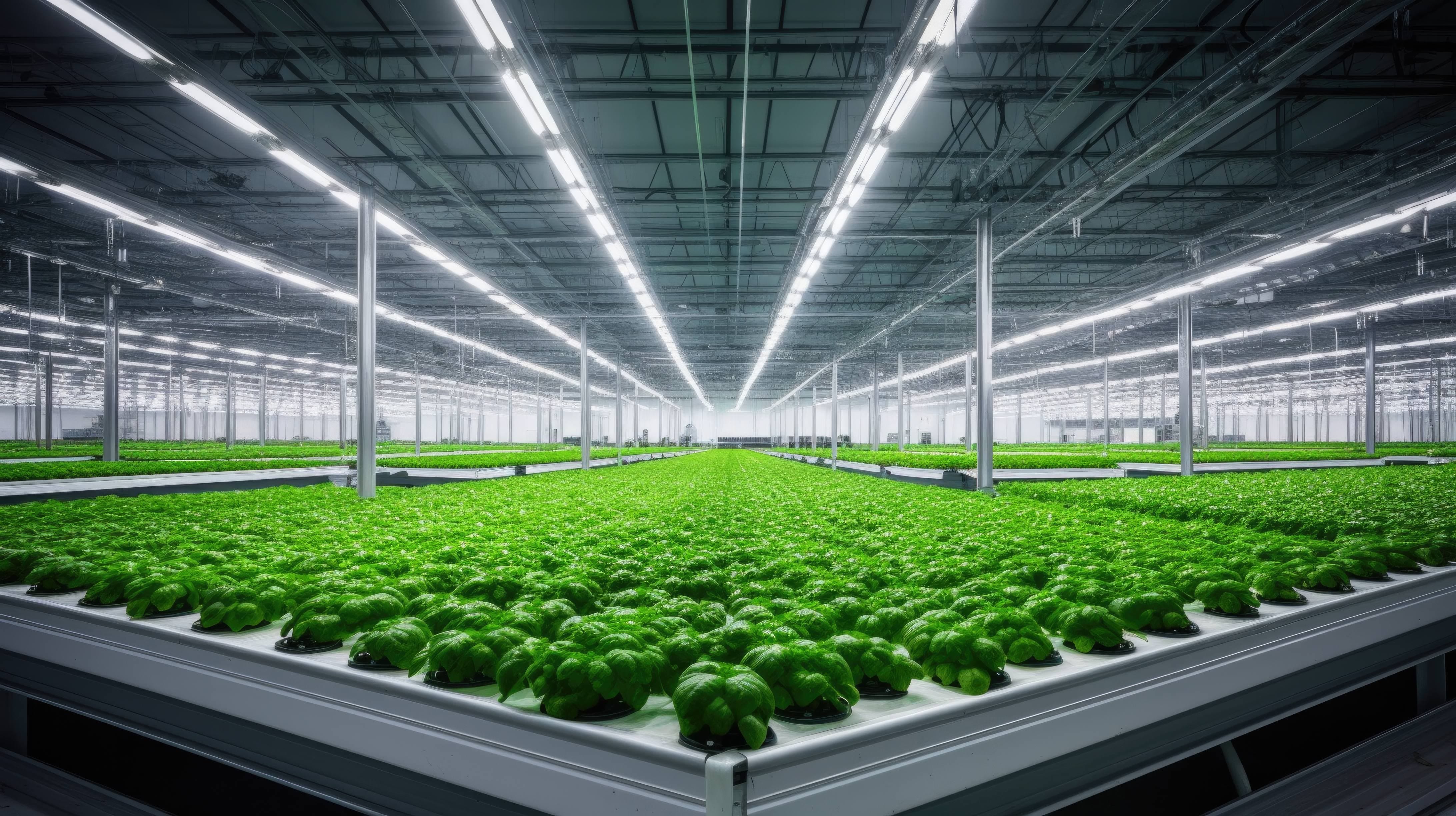
“Productive agricultural greenhouse …” from pixexid.com
Another aspect to consider is the technical support available for your system. Choose providers that offer robust customer service and technical assistance, so you have help readily available if you encounter any issues.
Example: A tomato grower noticed that his plants were not producing as much fruit as they should. After installing soil moisture sensors and a central control unit, he was able to adjust his watering schedule based on real-time data. This led to a 20% increase in yield and a significant reduction in water usage.
Adapting to Technological Advances and Updates
Finally, the world of technology is always advancing, and your smart greenhouse system will need to keep up. This means staying informed about the latest updates and being prepared to upgrade components or software as needed. It’s a continuous process of learning and adapting, but one that can keep your greenhouse at the forefront of agricultural technology.
As we look at the success stories of IoT smart greenhouses, it’s clear that the benefits are not just theoretical. They are real, measurable, and impactful. These systems are not just about keeping up with the latest tech trends, they’re about creating a more sustainable future for agriculture.
The Era of Smart Farming: Revolutionizing Greenhouses with IoT Technology
The term ‘IoT’ stands for the Internet of Things, which in the context of greenhouses, refers to a network of physical devices that collect and exchange data. When we talk about IoT in greenhouse farming, we’re referring to a system where sensors and actuators are connected to a central hub, which then processes the data to automate the environmental controls within the greenhouse.
Let’s break this down: you have temperature sensors, humidity sensors, soil moisture probes, and light meters all working in unison. They continuously feed information back to a central system that makes decisions on when to water your plants, how much supplemental light to provide, or when to adjust the temperature. All this happens seamlessly, often without the need for you to be physically present in the greenhouse.
Why Smart Greenhouse Automation is a Game-Changer
Why is this important, you might ask? Well, because it allows for a level of precision in plant care that is almost impossible to achieve manually. With smart greenhouse automation:
- You can ensure your plants receive the exact amount of water they need, which not only saves water but also prevents the stress that over or under-watering can cause to your plants.
- You can optimize the use of fertilizers, applying them in the right amounts and at the right time, leading to healthier plants and less environmental runoff.
- You can maintain the perfect growing conditions year-round, which means you can produce more food, more often, regardless of external weather conditions.
And let’s not forget, with the global population growing and the climate changing, the pressure is on to produce more food in more sustainable ways. Smart greenhouses are a big part of the solution to these challenges.
Case Studies: Success Stories of IoT Smart Greenhouses
- A high-tech lettuce farm that reduced water usage by 50% with precise irrigation control.
- An orchid nursery that achieved a 30% increase in flower production thanks to optimized climate conditions.
- A vineyard that minimized pesticide use by using sensors to monitor for disease conditions.
Each of these cases shows that when smart technology is applied thoughtfully and strategically, the results can be astounding.
Increased Productivity in a Tomato Cultivation Greenhouse
Take, for example, a mid-sized tomato cultivation greenhouse that implemented an IoT system. By integrating soil moisture sensors and an automated watering system, the greenhouse saw a 25% increase in tomato production. The system’s ability to provide water only when necessary not only conserved a precious resource but also resulted in healthier, more robust plants.
Energy Efficiency Leap in a Commercial Plant Nursery
Another success story comes from a commercial plant nursery that focused on energy efficiency. By using IoT-enabled climate control systems, the nursery was able to maintain optimal growing conditions while reducing energy consumption by 20%. This not only lowered operational costs but also reduced the nursery’s carbon footprint, making it a win-win for the business and the environment.
Climate Resilient Farming with Smart Greenhouse Systems
In an era of unpredictable weather patterns, climate resilience is more important than ever. A smart greenhouse system’s ability to adjust to changing external conditions can make the difference between a successful harvest and a failed one. By closely monitoring and adjusting to temperature fluctuations, a pepper farm was able to extend its growing season and avoid crop losses during an unusually cold spring.
Frequently Asked Questions on IoT Smart Greenhouse Automation
What Makes a Greenhouse ‘Smart’?
A greenhouse becomes ‘smart’ when it’s equipped with IoT devices that monitor, control, and automate its internal environment. This includes a network of sensors, a central control system, and actuators that work together to optimize conditions for plant growth.
Can IoT Systems be Retrofitted into an Existing Greenhouse?
Yes, IoT systems can often be retrofitted into existing greenhouses. The key is to choose modular and compatible components that can integrate with your current infrastructure. It’s also important to work with a knowledgeable installer who can help you adapt the new technology to your specific setup.
What is the Cost-Benefit Ratio of Implementing Smart Greenhouse Systems?
The cost-benefit ratio of implementing smart greenhouse systems can vary, but generally, the long-term benefits outweigh the initial investment. For example, the reduction in resource use and the increase in crop yields often lead to significant cost savings over time. It’s not uncommon for a smart greenhouse to see a return on investment within the first few years of operation.
How Secure are IoT Smart Greenhouse Systems?
IoT smart greenhouse systems, like all connected technologies, can be vulnerable to security risks. ith the implementation of strong security protocols, regular software updates, and secure network practices, the risks can be significantly minimized.
What are the First Steps in Moving Towards an IoT-Based Greenhouse?
The first steps in moving towards an IoT-based greenhouse include conducting a thorough assessment of your current operations, setting clear objectives for what you want to achieve with automation, and researching the IoT technologies that best suit your needs. Following that, you should plan the integration process and consider partnering with IoT experts to ensure a smooth transition.

